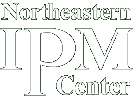Augmentative Biocontrol - Step 4
Step 4: Prepare Your Facility and Staff
Overview and Scheduling for Augmentative Biocontrol Programs
Successful augmentative biocontrol requires careful planning, clear communication, and consistent execution. Developing a structured schedule and training your team are critical components that help ensure your biocontrol efforts run smoothly and achieve desired outcomes.
Schedule & Timing
Create a detailed weekly schedule incorporating augmentative biocontrol-related tasks, with estimated time allocations for each. This helps ensure regular attention and reduces the risk of rushed or overlooked activities. Consider including:
- Pest Scouting and Biocontrol Success Monitoring: Set dedicated time for thorough scouting to observe pest populations and signs of biocontrol agent activity. This is a key indicator of your program’s effectiveness and informs future decisions.
- Receiving and Processing Biocontrol Shipments: Coordinate staff availability to prioritize receiving shipments promptly. Processing includes unpacking, quality checks, and preparing agents for release. Biocontrols are live organisms, so minimizing delays (especially over weekends or holidays) is essential.
- Backup Plans for Shipment Delays: Develop contingency protocols in case shipments are delayed or damaged. This may involve adjusting release timing, communicating with suppliers, or temporarily increasing alternative pest management measures.
- Quality Control Assessments: Allocate time for careful inspection of shipments upon arrival, including verifying species, checking for damage or mortality, and measuring storage conditions such as temperature.
- Release of Biocontrol Agents: Schedule release activities following supplier protocols and internal best practices. This may require coordinating across shifts and allocating adequate time for proper deployment.
- Data Assessments and Trend Analysis: Regularly review scouting data and biocontrol performance metrics to identify successes or failures. Weekly or monthly reviews allow for adaptive management including tweaking strategies based on observed results.
- Troubleshooting and Problem-Solving: Set aside time to address unexpected issues, whether related to pest outbreaks, biocontrol agent performance, or operational hiccups. Encourage open discussion and documentation of challenges and solutions.
Staff Training on Pest Scouting
Effective biocontrol depends heavily on well-trained staff who understand pests, biocontrol agents, and scouting procedures.
- Clear Expectations: Emphasize that scouting is a priority task that requires careful attention and should not be rushed. Quality over speed ensures reliable data.
- System Training: Teach your team how to use scouting systems or logbooks, record observations consistently, and adhere to data management protocols.
- Response Protocols: Make sure staff know the steps to follow if increasing pest pressure is detected, including when to escalate issues to supervisors or adjust biocontrol applications.
Delivery Day Protocols
Receiving and processing biocontrol shipments efficiently is critical to maintaining agent viability.
- Prioritization: When shipments arrive, processing and deploying biocontrol agents should take precedence over other tasks.
- Communication: Make sure staff know how to handle and store shipments immediately upon arrival, including temperature checks with infrared thermometers and following supplier storage guidelines.
Deployment Methods
- Supplier Collaboration: Ask your biocontrol supplier if release instructions come with shipments or if they offer in-person (or video) demonstrations. This hands-on training can clarify proper techniques and improve success rates.
- Centralized Instructions: If instructions are not supplied, create a well-organized, easy-to-access central location (physical or digital) where staff can find deployment protocols, tips, and troubleshooting advice.
- Encourage Creativity: Depending on your facility layout, staff may need to adapt or invent deployment tools or methods. Encourage brainstorming and trial-and-error within guidelines to optimize agent release.
Handling and Storage
- Storage Guidelines: Review recommended temperatures and conditions for any biocontrol agents in use. Use tools like infrared thermal guns to verify storage conditions are maintained.
- Limit Storage Time: While immediate use is best, if storage is necessary, do so only for the recommended duration and conditions to maintain agent health.
Communicating Biocontrol Use to Customers
Educating your customers about augmentative biocontrol can build trust and support for your sustainable practices.
- Marketing Biocontrol: Consider advertising your use of biocontrol agents as part of your commitment to sustainability and reduced chemical inputs. Posters, flyers, or social media posts can help spread the word.
- Develop Talking Points: Work with your team to prepare simple, clear explanations about biocontrol to share with customers, including how it works and its safety.
- Addressing Concerns: Be ready to reassure customers who may worry about “bugs” being released in your facility or “wasps” (parasitoids). Clear, honest communication can alleviate fears and turn curiosity into appreciation.
